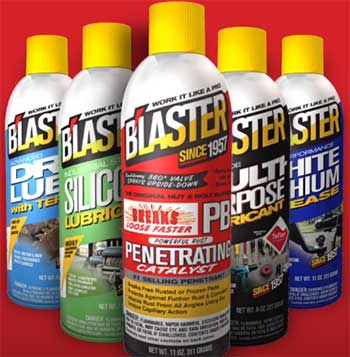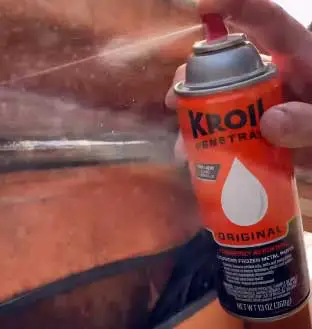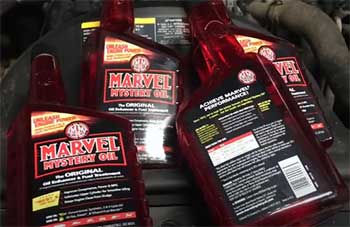Penetrating oils are a must-have for any toolbox. When rust and corrosion seize up nuts, bolts, and other fasteners, a good penetrating oil can be a lifesaver. Two of the most popular penetrating oils on the market are Kroil and PB Blaster.
But which one is the best?
In this comprehensive guide, we’ll compare Kroil and PB Blaster head-to-head. We’ll look at how they work, key features and benefits, differences, and do an in-depth Kroil vs PB Blaster showdown. By the end, you’ll know which penetrating oil is right for your needs.
A Brief Comparison Table
| Feature | Kroil | PB Blaster |
| Penetrating Ability | Excellent, low surface tension allows deep penetration | Very good, strong capillary action |
| Speed | Very fast, works in 10-15 minutes | Slower, can take hours to fully work |
| Rust Removal | Good at dissolving light rust | Excellent at removing heavy rust |
| Corrosion Protection | Leaves robust protective film | Some protection but not as much |
| Plastic/Rubber Safe | Completely safe on all plastics and rubber | Can degrade certain plastics |
How Do Penetrating Oils Work?

Before diving into the Kroil and PB Blaster comparison, let’s take a moment to understand how penetrating oils work in the first place.
Penetrating oils work by seeping into the microscopic pores and imperfections in the metal.
They use capillary action to travel deep into the threads and crevices of the fastener.
Once inside, penetrating oils break down and displace rust and corrosion.
They also lubricate the metal surfaces. This frees up seized parts and allows you to unstick the fastener.
Some penetrating oils rely mostly on solvents to penetrate and dissolve rust. Others use a blend of lubricants to both penetrate and lubricate. Kroil and PB Blaster take slightly different approaches, which we’ll get into next.
Key Features and Benefits of Kroil
Kroil has been around since the 1930s. It was originally designed by aircraft mechanic Irving Kroil to free up corroded spark plugs in airplane engines.
Here are some of the key benefits and features of Kroil:
- Incredible penetrating ability: The proprietary formula allows Kroil to penetrate small spaces quickly thanks to low surface tension. Many reviewers say no other oil compares for getting into stuck parts.
- Lubricates and protects: Kroil doesn’t just penetrate and dissolve rust. It also leaves behind a lubricating film to prevent corrosion from reforming.
- Loosens metal parts: The blend of solvents and lubricants in Kroil separates stuck metallic parts by dissolving rust and lubricating mating surfaces.
- Displaces moisture: Kroil pushes aside water and humidity on metal to prevent future corrosion and seizure.
- Safe on plastics: Kroil won’t degrade or swell plastic or rubber components like some penetrants. This makes it safe for automotive and industrial uses.
Kroil is designed to be a fast-acting penetrating and lubricating oil. The thin formula wicks into spaces rapidly and the solvents go to work quickly freeing the fastener.
Key Features and Benefits of PB Blaster

PB Blaster is another leading penetrating oil that’s been around since the 1950s. Here are some of its notable benefits:
- High capillary action: PB Blaster wicks into tiny crevices thanks to excellent capillary action. The thin formula spreads rapidly into stuck parts and underheads.
- Boosted with solvents: Chlorinated solvents help PB Blaster dissolve rust and lift corrosion from threads and flats. This chemical action breaks the bond.
- Added lubricants: PB Blaster contains both petroleum oils and PTFE lubricants to displace moisture and leave a protective film after penetrating.
- Cuts through grease and oil: The chlorinated formula also chews through old dried grease and gunked up oil deposits.
- Stable formula: PB Blaster has a more stable formula than some penetrants so it has a longer shelf life. The aerosol spray also works upside down.
The main advantage of PB Blaster is the chlorinated solvents that act aggressively against rust buildup.
It also leaves behind a lubricating film for added protection.
Key Differences Between Kroil and PB Blaster
Now that we’ve looked at what sets these two penetrating oils apart, let’s focus on how Kroil and PB Blaster differ from each other:
- Penetrating ability: Most reviewers give Kroil the edge when it comes to penetrating power. The low surface tension of Kroil allows it to seep deeper into spaces.
- Speed: Kroil is also considered a faster-acting penetrant. PB Blaster can take hours or even overnight to fully work on badly seized parts.
- Formula: Kroil relies more on light oils that seep deep into pores. PB Blaster depends more on solvents to dissolve rust.
- Corrosion inhibition: Kroil seems to have better long-term corrosion prevention thanks to robust lubricants in the formula.
- Plastic-safe: Kroil is safer to use on plastic and rubber components. The chlorinated solvents in PB Blaster can damage some plastics.
So in summary, Kroil is faster-acting, penetrates deeper, and protects against future corrosion better. But PB Blaster has very effective solvents for heavy rust buildup. Keep these key differences in mind as we compare these two penetrating oils head-to-head.
Kroil And PB Blaster: Showdown Time!
Now it’s time for the main event – a head-to-head penetrating oil showdown between Kroil and PB Blaster!
We’ll compare how they perform in 5 key categories:
Penetrating Ability
The most important test for a penetrating oil is how well it seeps into stuck parts. This head-to-head test shows why Kroil is legendary for its wicking ability:
- Kroil seeps into microscopic spaces and gaps rapidly thanks to low surface tension. Reviewers say Kroil penetrates faster and deeper than any other oil.
- PB Blaster also displays excellent capillary action but not quite as impressive as Kroil. PB Blaster still effectively works into stuck threads and crevices.
Winner: Kroil
Also Read: Reasons For Kroil Penetrating Oil Being So Expensive.
Speed of Effect
When freeing a seized fastener, speed is critical. Here’s how fast these two penetrants work:
- Kroil works very quickly, usually freeing stuck parts in 10-15 minutes. This allows you to complete many projects in one sitting.
- PB Blaster can take 30 minutes up to 12 hours to fully penetrate and loosen parts. You often have to reapply multiple times.
Winner: Kroil
Removing Rusted Nuts and Bolts
Penetrating oils need solvents and lubricants to defeat heavily rusted and seized fasteners:
- Kroil dissolves surface rust very effectively. The lightweight formula also seeps around mating surfaces to lubricate and separate parts.
- PB Blaster uses powerful chlorinated solvents that attack heavy rust buildup aggressively. The added lubricants further help free parts.
Winner: Tie
Protecting Against Rust

Corrosion prevention is important for protecting parts after removing fasteners:
- Kroil leaves behind robust lubricating film that displaces moisture and prevents rust long-term.
- PB Blaster provides some corrosion protection but not as long-lasting or complete as Kroil.
Winner: Kroil
Plastic and Rubber Safety
Penetrating oils can degrade some plastics and swell rubber:
- Kroil has no effect on plastic or rubber components. It’s widely used in automotive applications.
- PB Blaster can damage certain plastics with its chlorinated formula. Use cautiously around plastic and rubber parts.
Winner: Kroil
Which Should You Choose?
Based on this comprehensive Kroil vs PB Blaster comparison, which penetrating oil is the clear winner?
For most uses, Kroil is the superior choice. It simply has the best penetrating ability thanks to its light oil formula that seeps into the tiniest spaces.
Kroil also works faster, provides better corrosion protection, and is safer on plastic parts. It’s ideal for just about any stuck fastener situation.
However, PB Blaster has an advantage when dealing with severely rusted and seized parts. The strong solvents work aggressively to chew through heavy rust deposits.
So PB Blaster can be worth using when Kroil can’t conquer the thickest oxidation on your project. Just use it cautiously on plastic and rubber components.
Hopefully this guide has helped you decide between Kroil and PB Blaster. Let’s wrap up with answers to some frequently asked questions.
Also Read: Fogging Oil Equivalents.
FAQ on Kroil and PB Blaster
No penetrating oil is exactly equivalent to Kroil. The proprietary formula offers a unique balance of penetration, lubrication, and corrosion protection.
Kroil is considered the best overall penetrating oil. It displays remarkable capillary action, works quickly, and protects against future rust. For severe rust, PB Blaster has advantages.
Avoid using PB Blaster on plastic or rubber components as it can degrade or swell some materials. Also don’t use it on extremely high temperature surfaces.
Yes, PB Blaster is very effective at penetrating into stuck parts and dissolving heavy rust deposits. It just doesn’t work as fast or protect as well long-term as Kroil.
Conclusion
Hopefully, you now have a good understanding of how Kroil and PB Blaster penetrating oils compare. Kroil is the best overall choice for most situations, but PB Blaster can be ideal for removing heavy rust.
Whichever oil you choose, soaking stuck parts properly and allowing time for the penetrant to work will lead to success. With patience and the right product, you can defeat that rusted and seized fastener.

